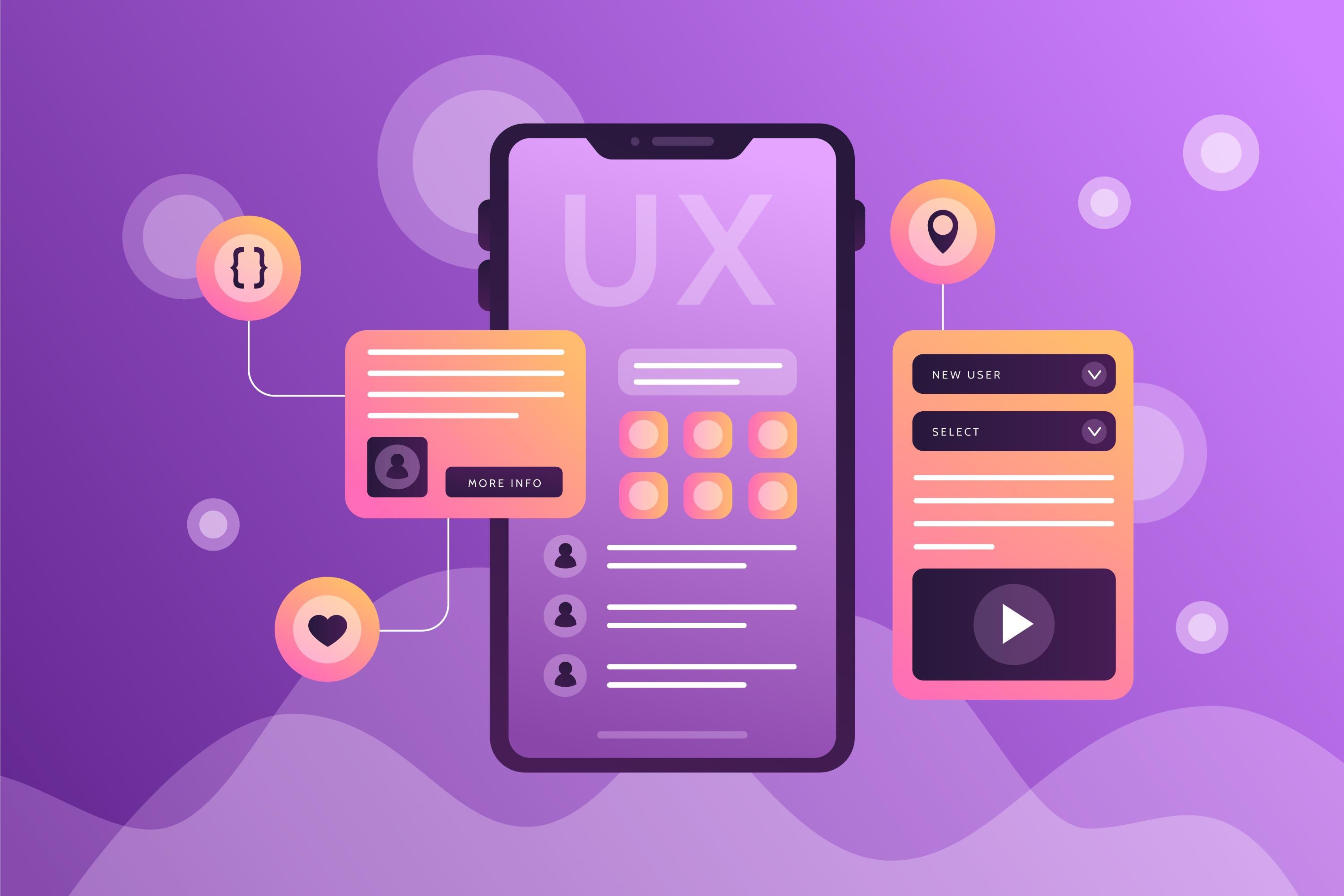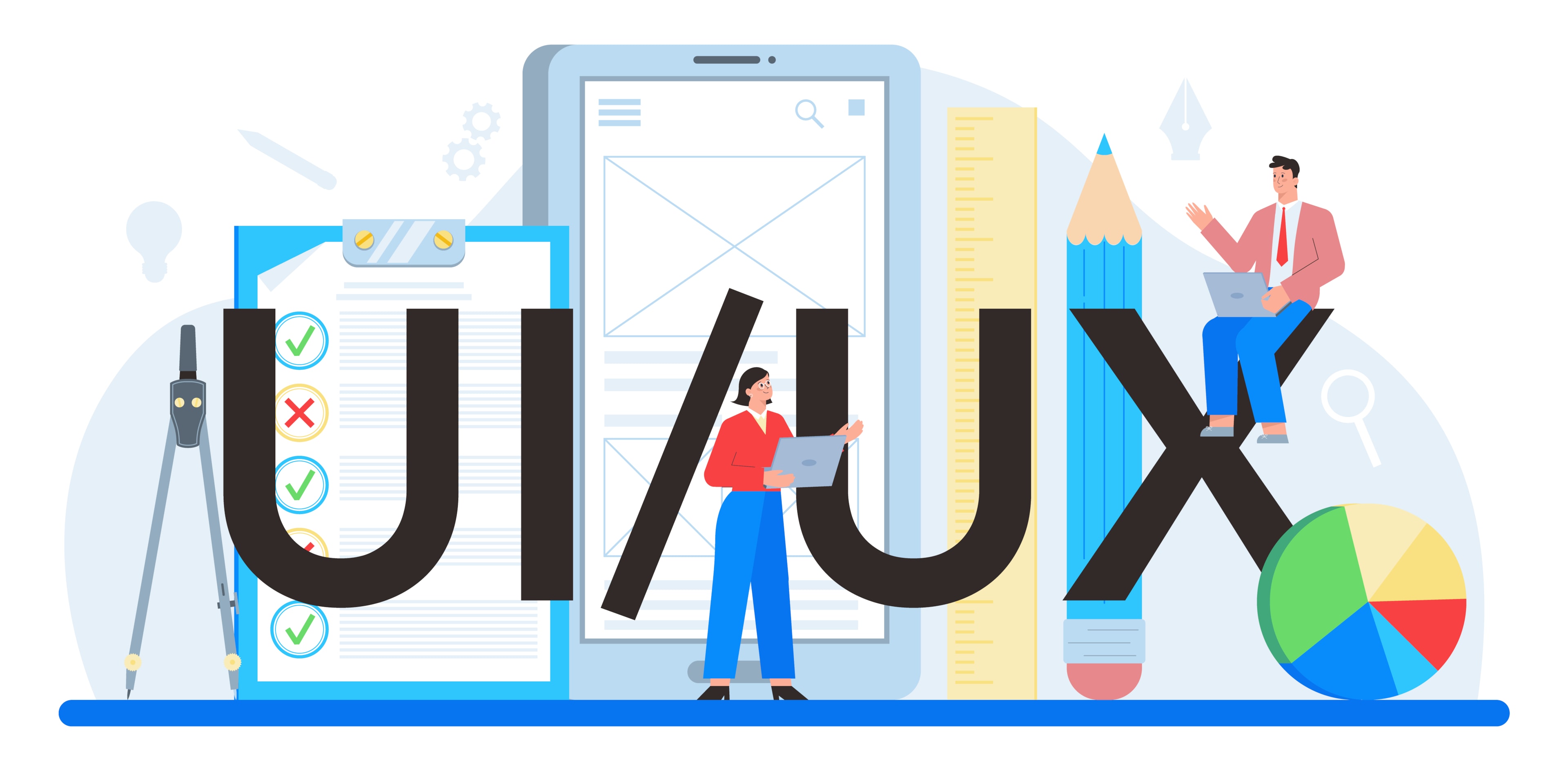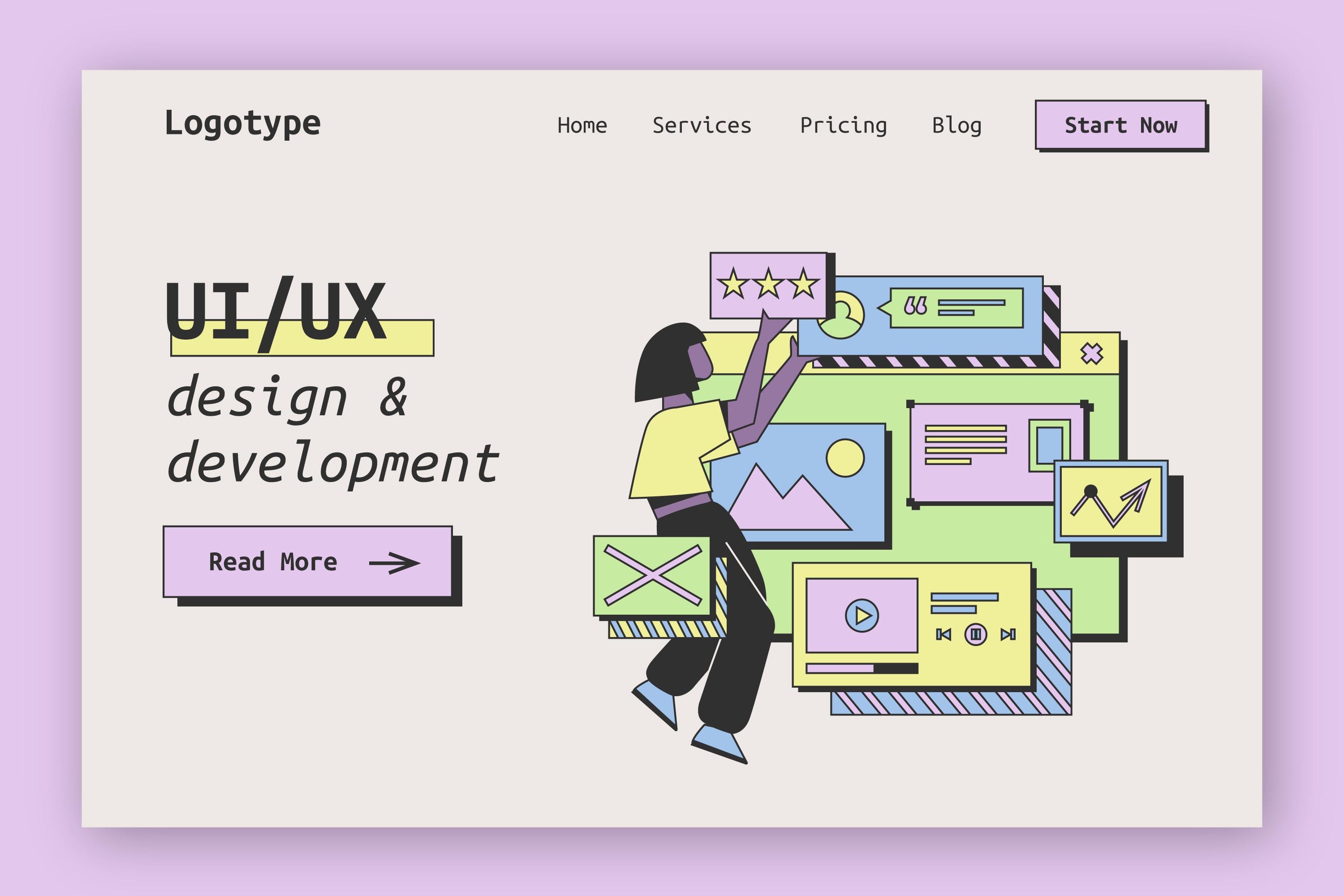

UX UI Designer Job Description: Complete Career Guide 2025
Published on February 20, 2025
By Marianella Saavedra Terkes · 6 minute read

The field of UX UI design has transformed dramatically in recent years, evolving far beyond traditional interface design. As organizations increasingly prioritize website user experience, UX UI designers have become essential architects of digital products. If you are interested in exploring a career transition or seeking to understand user experience design, this guide will illuminate the realities of being a UX UI designer in 2025.
Understanding the UX UI Designer Role
A UX UI designer combines user experience (UX) design with user interface (UI) development to craft intuitive digital products. These professionals focus on deep understanding of user needs, conducting extensive user research with depth, and implementing user testing to ensure optimal interaction design. Their work requires a sophisticated blend of creativity and analytical thinking, as they must balance business goals with user-centered solutions.
The impact of effective UX UI design extends beyond aesthetics. Research shows that thoughtful user experience design can significantly improve user satisfaction and business value. Through careful attention to usability and functionality, UX UI designers help organizations achieve their strategic objectives while ensuring smooth interactions for end users.
Introduction to UX Design

User Experience (UX) design is a crucial aspect of creating products that are easy to use, efficient, and enjoyable for users. It involves understanding user needs, behaviors, and motivations to create products that meet their needs. In this section, we will explore the basics of UX design and its importance in business.
What is User Experience (UX)?
User Experience (UX) refers to any interaction a user has with a product or service. It encompasses the user's perceptions, feelings, and attitudes towards a product or service. UX design is a process that aims to make the experience of using a particular product as easy, smooth, and enjoyable as possible for the user. The end goal of UX design is to provide the user with an intuitive, efficient, and relevant experience.
Importance of UX in Business
UX design is essential for businesses as it can improve customer satisfaction, increase customer retention, and ultimately drive revenue growth. A well-designed UX can also help businesses to differentiate themselves from their competitors and establish a strong brand identity. In today's digital age, a good UX is no longer a luxury, but a necessity for businesses to succeed.
What is User Interface (UI)?
User Interface (UI) design focuses on the visual and interactive aspects of a product. It involves creating the look and feel of a product's interface, ensuring that it is visually appealing and easy to navigate. UI design encompasses elements such as buttons, icons, spacing, typography, and color schemes. The goal of UI design is to guide users through a product's interface in an intuitive manner, enhancing their overall experience. Effective UI design not only captures users' attention but also facilitates seamless interaction, aligning with business goals and user needs.
Modern UX UI Design: A Strategic Approach

Today's UX UI designers serve as strategic partners in digital product development. They work at the intersection of user research, interaction design, and information architecture, collaborating across teams to shape product strategy. This evolution of the role reflects a deeper understanding of how user experience impacts business success.
To ensure optimal results, it is crucial to assess user feedback and website performance regularly. In contemporary digital teams, UX UI designers frequently engage in comprehensive user research, information architecture development, and interaction design implementation, focusing on both website and app user experience optimization.
UX UI Design in the NoCode Era
The emergence of NoCode and LowCode platforms has revolutionized how UX UI designers approach their craft. These tools enable designers to create and implement functional interfaces without traditional development dependencies, making the design process easier and expanding their role beyond pure design into functional prototyping and deployment. In the NoCode ecosystem, UX UI designers can now rapidly prototype, test with real users, and even launch production-ready products with unprecedented autonomy.
This shift has particular impact on apps and website user experience, as designers can now implement and test their ideas directly. Tools like Webflow and Flutterflow have bridged the traditional gap between design and development, enabling designers to create complex interactive experiences for both web and mobile apps. Platforms like Bubble further empower designers to craft intricate interactions. This evolution requires UX UI designers to balance rapid development capabilities with proper design systems and scalability considerations, creating a new breed of designers who can oversee the entire product development journey.
The Importance of UX UI Designers at Kreante
At Kreante, UX UI designers play a pivotal role in delivering exceptional digital experiences that elevate our clients' brands. Our team of experts is dedicated to creating intuitive, user-centered designs that seamlessly align with business goals. With a deep understanding of user needs and a strategic approach to interaction design, our designers consistently achieve high levels of customer satisfaction. This added value has led to numerous successful projects and delighted clients, solidifying Kreante's reputation as a leader in the field of UX UI design. Our commitment to excellence ensures that our clients receive not only functional and aesthetically pleasing products but also valuable solutions that enhance their digital presence.
Career Development and Growth Opportunities
The path to becoming a UX UI designer has become increasingly accessible, with multiple entry points into the field. While traditional design degrees provide a strong foundation, many successful designers enter the profession through specialized bootcamps, certification programs, or self-directed learning combined with practical experience.
Educational Pathways
Formal education options include degrees in:
Digital Design or Interactive Design
Human-Computer Interaction
Visual Communication
Psychology with focus on Human Factors
Professional certifications can significantly enhance your credentials, with popular options like Google's UX Design Certificate or specialized courses from platforms like Coursera and Udacity.
Career Progression
UX UI designers typically progress through several career stages, each offering opportunities for growth and specialization. Entry-level positions often focus on specific aspects of the design process, while senior roles involve greater strategic responsibility and team leadership. The field offers competitive compensation packages that typically increase with experience and expertise.
As you advance, you might choose to:
Specialize in specific industries like tech, fintech, fashion or healthcare for example
Focus on research or interaction design
Move into design leadership roles
Start your own design consultancy as a freelance
Become a NoCode design expert
Industry Opportunities
The demand for UX UI designers continues to grow across various sectors. Organizations increasingly recognize that good user experience directly impacts business success. This has created diverse opportunities in:
Digital product companies
Design agencies
Technology startups
Enterprise organizations
Consulting firms
Remote work opportunities have also expanded significantly, allowing designers to work with teams and clients globally while maintaining flexibility in their work environment.
The Digital Product Design Process

The UX UI design process begins with extensive user research to gain deep understanding of user needs and behaviors. This research phase involves studying the target user base through various methodologies, from interviews to usability tests. Designers analyze user feedback and behavioral data to inform their design decisions.
Information architecture forms the foundation of effective user experience design. UX UI designers carefully structure content and functionality to ensure intuitive navigation and smooth user flows. This process requires careful consideration of many factors, including user behavior patterns and accessibility requirements.
Key Skills for Success
Successful UX UI designers demonstrate several essential capabilities that enable them to deliver valuable solutions:
Deep Understanding of Users: Ability to conduct thorough user research and interpret user feedback effectively
Strategic Design Thinking: Skills in crafting solutions that balance user needs with business goals
Technical Proficiency: Knowledge of interaction design principles and digital accessibility standards
Research Excellence: Expertise in user testing methodologies and usability evaluation
Creativity: Ability to think outside the box and innovate unique design solutions that captivate users
Communication: Ability to present design decisions and collaborate with stakeholders
Essential Tools and Methodologies
Modern UX UI designers utilize an array of tools and methodologies to enhance user experiences. These industry-standard platforms facilitate efficient prototyping and testing, while specialized research tools offer valuable insights into user behavior. The primary focus remains on crafting accessible and effective solutions that align with both user needs and business objectives.
User testing is integral throughout the design process. By conducting systematic usability tests and continuously gathering user feedback, designers ensure their solutions effectively address user requirements. This iterative approach to testing and refinement upholds high standards of user satisfaction.
Essential Tools and Methodologies
Design Platforms: Figma, Sketch, Adobe XD
Prototyping Tools: InVision, Axure, Marvel
User Research Tools: UserTesting, Lookback, Optimal Workshop
Collaboration Tools: Notion, Miro, Slack, Figjam, Trello
Analytics Tools: Google Analytics, Hotjar, Crazy Egg
Accessibility Checkers: WAVE, Axe, Lighthouse
These tools empower designers to create intuitive, user-centered designs that not only meet but exceed user expectations and business goals.
Future Trends and Opportunities
The field of UX UI design continues evolving with emerging technologies and changing user expectations. Key developments include advanced user research methods, enhanced focus on digital accessibility, integration of artificial intelligence, and emphasis on sustainable design practices.
The rise of NoCode platforms is revolutionizing the tech industry by democratizing digital product creation. By eliminating traditional coding barriers, NoCode empowers designers and entrepreneurs to bring their ideas to life swiftly and efficiently. This shift enables a broader range of individuals to participate in the tech ecosystem, fostering innovation and diversity. As designers leverage NoCode tools to craft intuitive interfaces and seamless user experiences, they contribute to a more inclusive digital landscape. The fusion of NoCode and design not only accelerates product development but also paves the way for groundbreaking solutions that can address global challenges, making technology accessible and impactful for all.
Moving Forward in Your Design Journey
Whether you're just starting or looking to advance your career, remember that UX UI design is a field of continuous learning and adaptation. Focus on developing both creative and analytical skills, stay current with industry trends, and build a strong professional network.
The most rewarding aspect of UX UI design is seeing how your work directly impacts user experiences and business success. As you grow in your career, you'll find that the skills you develop serve not just design execution but overall product strategy and innovation.
For those eager to delve deeper into the world of UX UI design, our blog offers a wealth of insights and resources. Discover in-depth articles on the latest tools and methodologies that are shaping the industry. Stay updated with cutting-edge trends and enhance your skills by visiting our blog for more valuable content tailored to aspiring and seasoned designers alike.
Ready to begin your journey in UX UI design? Start by exploring user research methodologies, practicing interaction design, and understanding how to conduct effective usability tests. The field offers exciting opportunities to shape the future of digital experiences while delivering significant value to both users and businesses.










